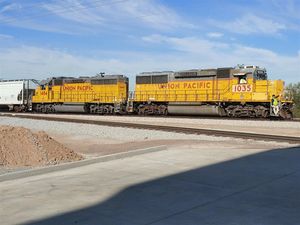
Climate control solutions innovator Lennox International (NYSE: LII) reported revenue ahead of Wall Street’s expectations in Q2 CY2025, with sales up 3.4% year on year to $1.50 billion. Its non-GAAP profit of $7.82 per share was 13.9% above analysts’ consensus estimates.
Is now the time to buy Lennox? Find out by accessing our full research report, it’s free.
Lennox (LII) Q2 CY2025 Highlights:
- Revenue: $1.50 billion vs analyst estimates of $1.46 billion (3.4% year-on-year growth, 2.5% beat)
- Adjusted EPS: $7.82 vs analyst estimates of $6.87 (13.9% beat)
- Adjusted EBITDA: $406.4 million vs analyst estimates of $342.2 million (27.1% margin, 18.8% beat)
- Management raised its full-year Adjusted EPS guidance to $23.75 at the midpoint, a 3.8% increase
- Operating Margin: 23.6%, up from 22.1% in the same quarter last year
- Free Cash Flow Margin: 3.9%, down from 10.4% in the same quarter last year
- Organic Revenue rose 3% year on year (7% in the same quarter last year)
- Market Capitalization: $22 billion
Company Overview
Based in Texas and founded over a century ago, Lennox (NYSE: LII) is a climate control solutions company offering heating, ventilation, air conditioning, and refrigeration (HVACR) goods.
Revenue Growth
Reviewing a company’s long-term sales performance reveals insights into its quality. Any business can experience short-term success, but top-performing ones enjoy sustained growth for years. Over the last five years, Lennox grew its sales at a decent 8.6% compounded annual growth rate. Its growth was slightly above the average industrials company and shows its offerings resonate with customers.
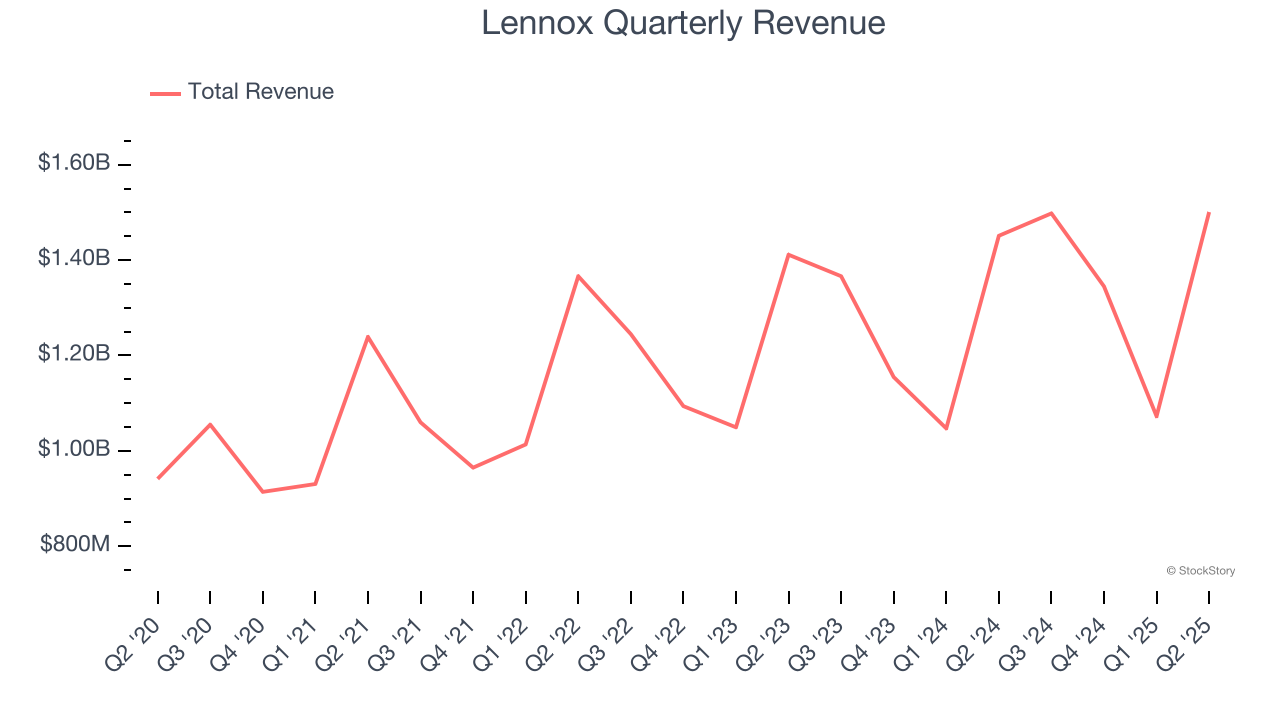
We at StockStory place the most emphasis on long-term growth, but within industrials, a half-decade historical view may miss cycles, industry trends, or a company capitalizing on catalysts such as a new contract win or a successful product line. Lennox’s recent performance shows its demand has slowed as its annualized revenue growth of 6.2% over the last two years was below its five-year trend. 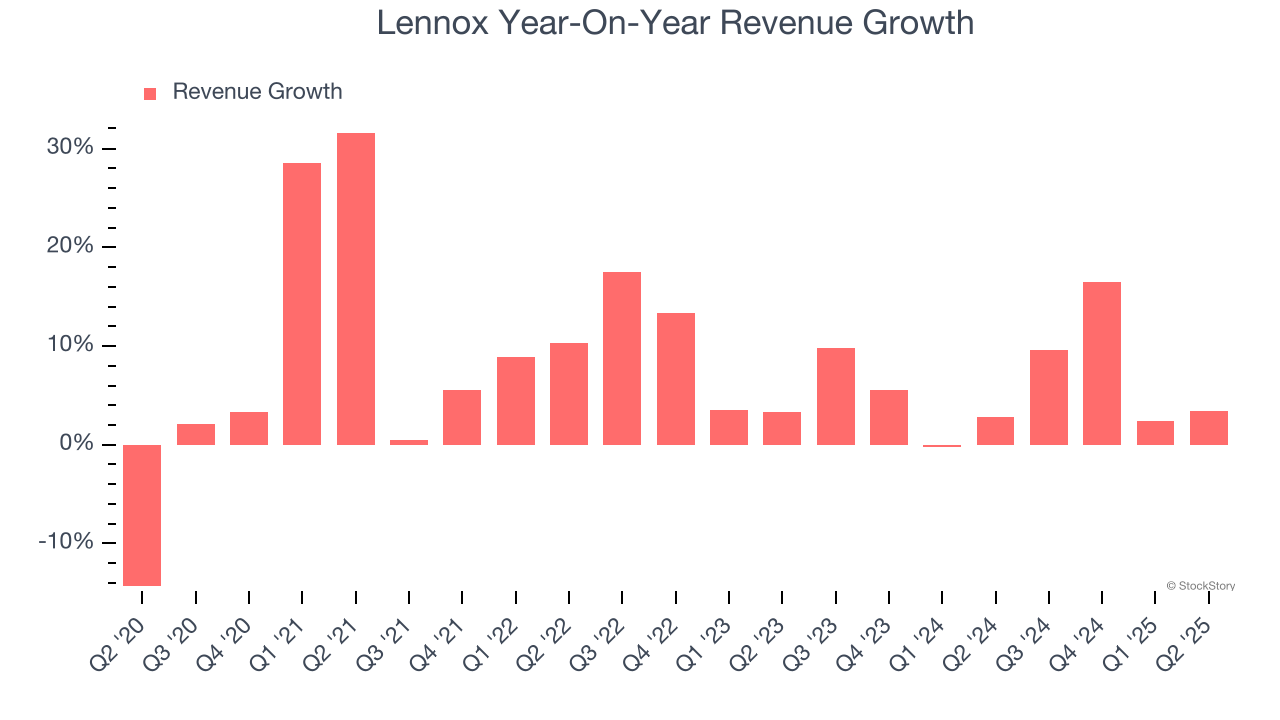
Lennox also reports organic revenue, which strips out one-time events like acquisitions and currency fluctuations that don’t accurately reflect its fundamentals. Over the last two years, Lennox’s organic revenue averaged 8.4% year-on-year growth. Because this number is better than its normal revenue growth, we can see that some mixture of divestitures and foreign exchange rates dampened its headline results. 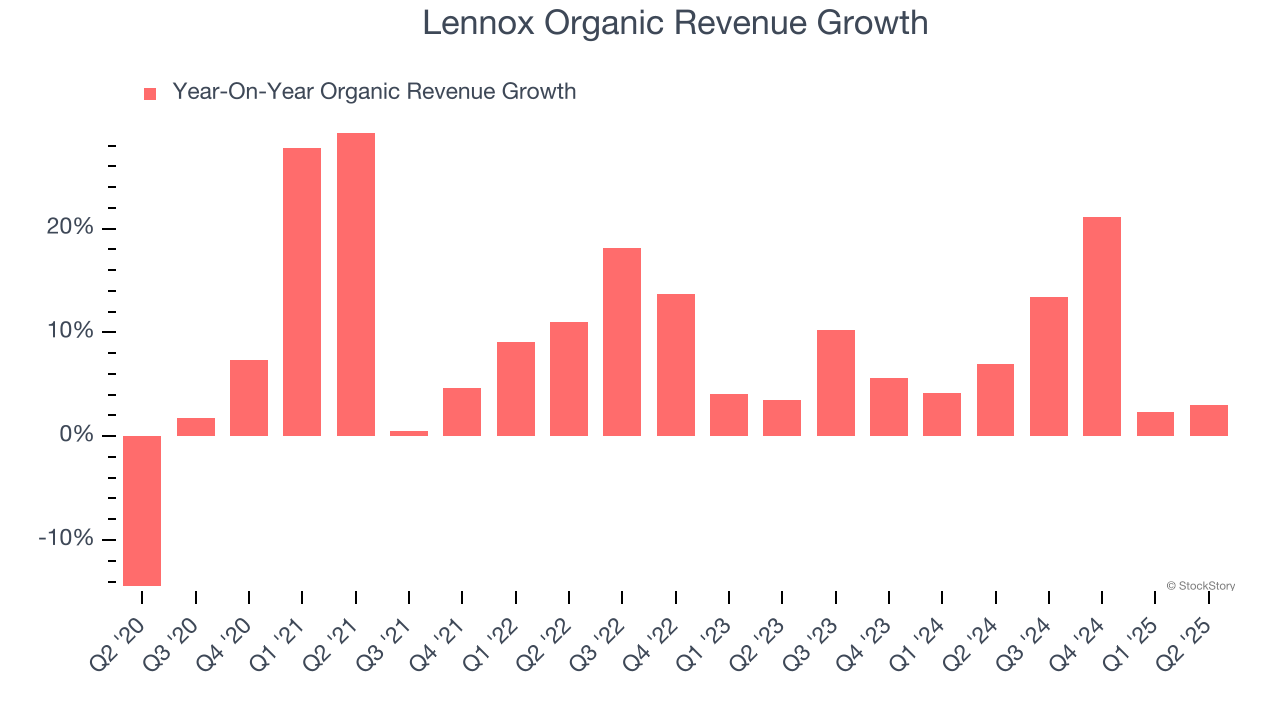
This quarter, Lennox reported modest year-on-year revenue growth of 3.4% but beat Wall Street’s estimates by 2.5%.
Looking ahead, sell-side analysts expect revenue to grow 3.5% over the next 12 months, a slight deceleration versus the last two years. This projection is underwhelming and suggests its products and services will see some demand headwinds. At least the company is tracking well in other measures of financial health.
Today’s young investors won’t have read the timeless lessons in Gorilla Game: Picking Winners In High Technology because it was written more than 20 years ago when Microsoft and Apple were first establishing their supremacy. But if we apply the same principles, then enterprise software stocks leveraging their own generative AI capabilities may well be the Gorillas of the future. So, in that spirit, we are excited to present our Special Free Report on a profitable, fast-growing enterprise software stock that is already riding the automation wave and looking to catch the generative AI next.
Operating Margin
Operating margin is one of the best measures of profitability because it tells us how much money a company takes home after procuring and manufacturing its products, marketing and selling those products, and most importantly, keeping them relevant through research and development.
Lennox has been a well-oiled machine over the last five years. It demonstrated elite profitability for an industrials business, boasting an average operating margin of 16.3%.
Looking at the trend in its profitability, Lennox’s operating margin rose by 4.2 percentage points over the last five years, as its sales growth gave it operating leverage.
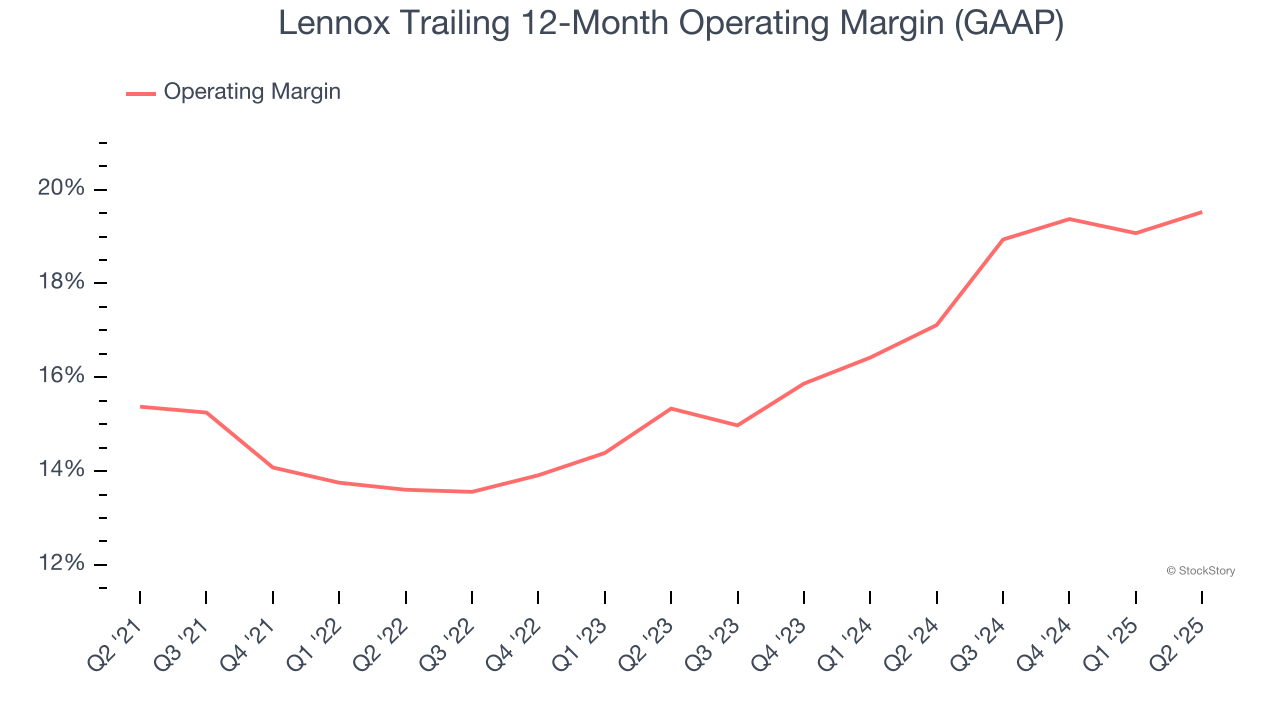
In Q2, Lennox generated an operating margin profit margin of 23.6%, up 1.5 percentage points year on year. The increase was encouraging, and because its operating margin rose more than its gross margin, we can infer it was more efficient with expenses such as marketing, R&D, and administrative overhead.
Earnings Per Share
Revenue trends explain a company’s historical growth, but the long-term change in earnings per share (EPS) points to the profitability of that growth – for example, a company could inflate its sales through excessive spending on advertising and promotions.
Lennox’s EPS grew at an astounding 20.3% compounded annual growth rate over the last five years, higher than its 8.6% annualized revenue growth. This tells us the company became more profitable on a per-share basis as it expanded.
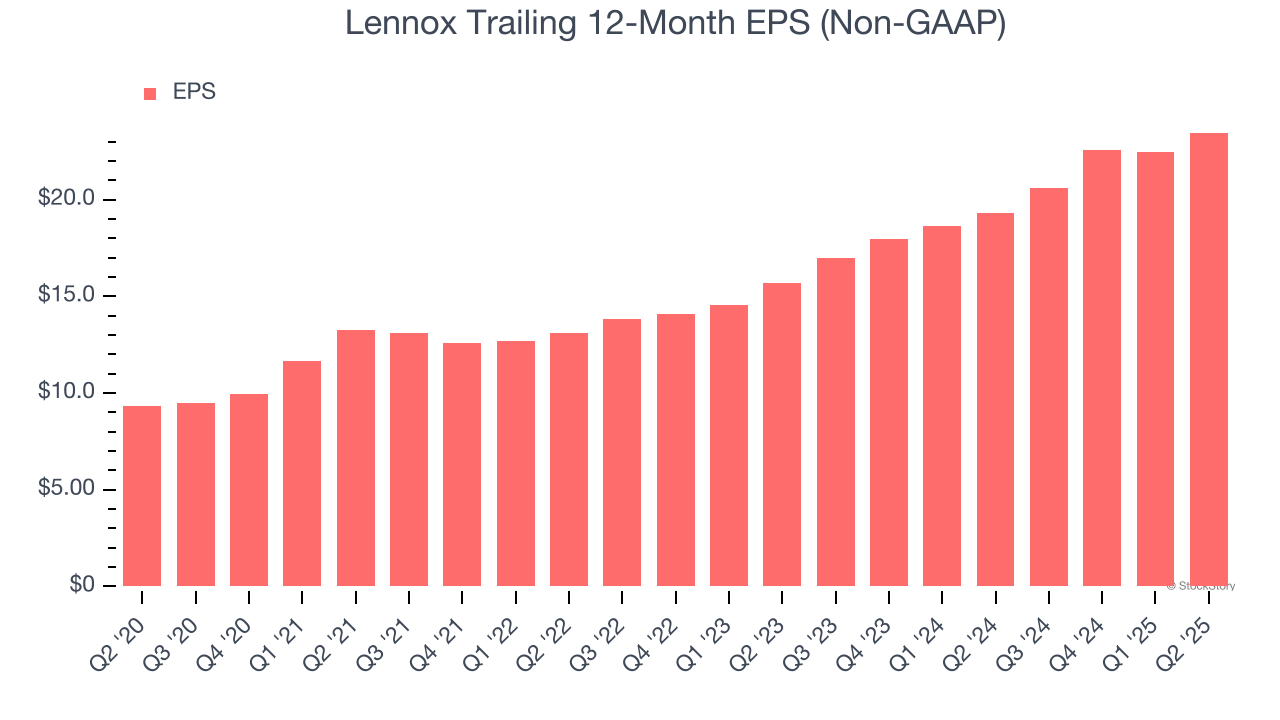
Diving into Lennox’s quality of earnings can give us a better understanding of its performance. As we mentioned earlier, Lennox’s operating margin expanded by 4.2 percentage points over the last five years. On top of that, its share count shrank by 7.6%. These are positive signs for shareholders because improving profitability and share buybacks turbocharge EPS growth relative to revenue growth. 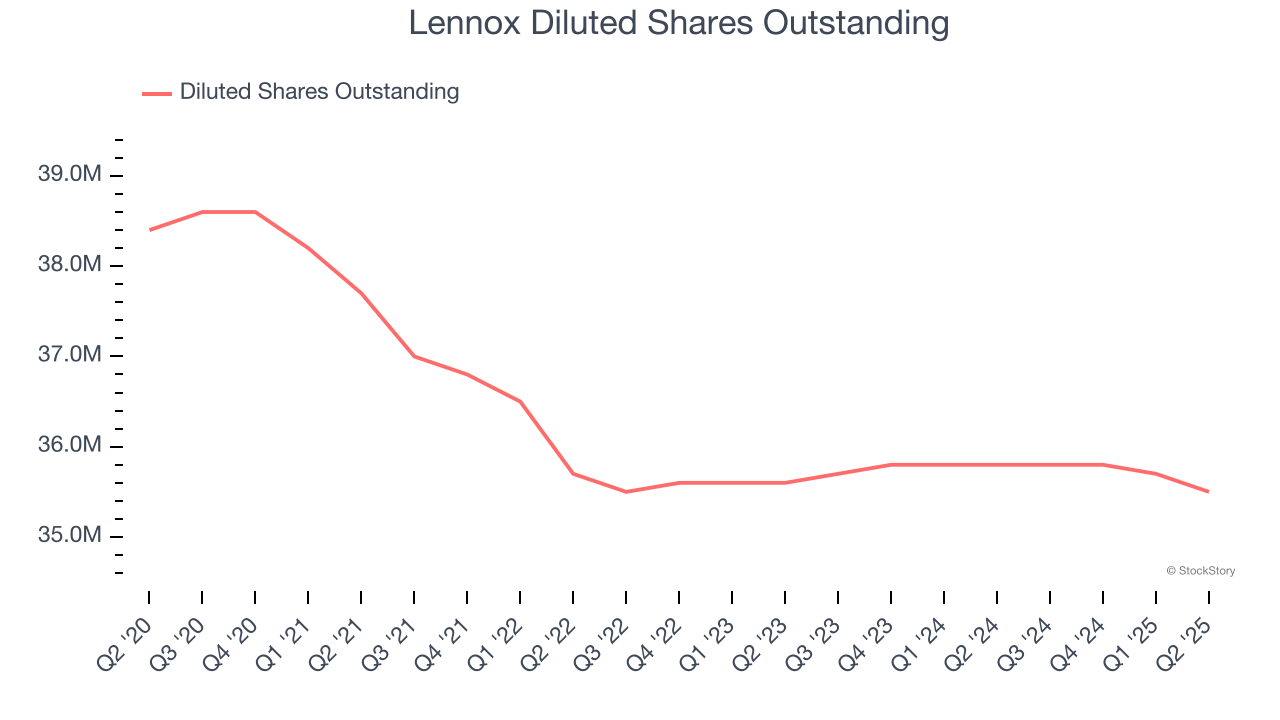
Like with revenue, we analyze EPS over a shorter period to see if we are missing a change in the business.
For Lennox, its two-year annual EPS growth of 22.2% was higher than its five-year trend. We love it when earnings growth accelerates, especially when it accelerates off an already high base.
In Q2, Lennox reported EPS at $7.82, up from $6.83 in the same quarter last year. This print easily cleared analysts’ estimates, and shareholders should be content with the results. Over the next 12 months, Wall Street expects Lennox’s full-year EPS of $23.47 to grow 3.5%.
Key Takeaways from Lennox’s Q2 Results
We were impressed by how significantly Lennox blew past analysts’ EBITDA expectations this quarter. We were also glad its full-year EPS guidance trumped Wall Street’s estimates. Zooming out, we think this quarter featured some important positives. The stock traded up 3.8% to $643.01 immediately after reporting.
Sure, Lennox had a solid quarter, but if we look at the bigger picture, is this stock a buy? We think that the latest quarter is only one piece of the longer-term business quality puzzle. Quality, when combined with valuation, can help determine if the stock is a buy. We cover that in our actionable full research report which you can read here, it’s free.
